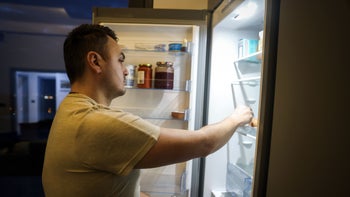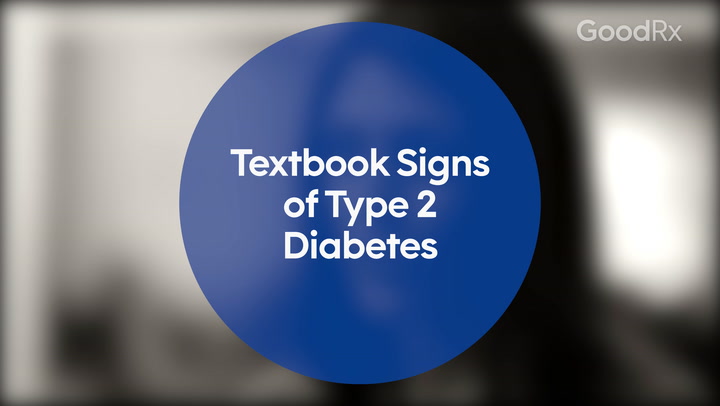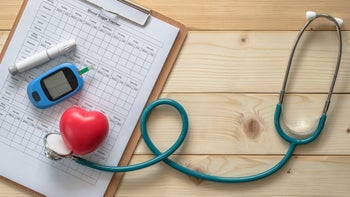
7 Ways to Lower Your Blood Sugar (Without Cutting Carbs)
Key takeaways:
Cutting back on carbohydrates isn’t the only way to lower your blood sugar. Adding protein, fat, and fiber to your meals and snacks can help.
Physical movement can also play a big role in lowering blood sugar. This includes cardio, strength training, casual walking, and even gentle stretching.
Beyond diet and exercise, other daily habits — like getting enough quality sleep and managing chronic stress — can help you maintain a healthy blood sugar level.
Table of contents

Many people are paying closer attention to their blood sugar these days. Maybe you recently learned you have prediabetes. Or maybe you’ve been living with diabetes for years now, and you want to lower your hemoglobin A1C.
No matter the reason, there are many ways to lower blood sugar outside of medication. And you don’t have to completely give up your favorite foods either.
Blood sugar is regulated by a hormone called insulin. Making changes to your food intake, moving more, and managing stress can help insulin do a better job at controlling your blood sugar.
1. Eat foods with fat
Incorporating fat into your meals and snacks can help slow the rise of your blood sugar when you eat. This is because your body takes a while to digest fat. For example, full-fat dairy products are better for blood sugar compared to fat-free ones.
Eating meals with fat can also help you feel more full and satiated for several hours after a meal. And fat helps to absorb fat soluble vitamins, A, D, E, and K.
Try incorporating a small amount of fat at every meal. Examples are avocados, olive oil, cheese, nuts or seeds.
2. Increase your protein
It’s important to make sure you’re getting enough protein every day. And, similar to fat, foods with protein help you feel full and are digested more slowly than foods without it.
There are plenty of ways to eat more protein with your meals and snacks. High-quality proteins include:
Chicken
Turkey
Pork
Eggs
Dairy products
Fish
Lean beef
The best exercises for lower blood sugar: We review the research on the best types, frequency, and timing of exercise to help lower your blood sugar.
Plant-based diets and diabetes: Eating more plant foods can help lower blood sugar, improve insulin sensitivity, and even lower your dose of diabetes medications.
Reversing prediabetes: If you’ve been diagnosed with prediabetes, learn about the lifestyle changes that can help you reverse the condition.
And don’t forget to add plant-based protein as well. Research shows that plant-based diets can help regulate blood sugar. And they can help people with diabetes lower their need for medication.
Snacks can be a great way to experiment with plant-based proteins, if they aren’t already a regular part of your diet. Some vegan snack ideas include:
Trail mix
Peanut butter with fruit or crackers
Hummus and veggies
3. Focus on fiber
There are a few types of carbohydrates: starches, fiber, and sugar. Sugar — specifically added sugars — is digested very quickly. This causes spikes in blood sugar. But fiber behaves very differently inside the body.
Fiber is the non-digestible part of plants. Most people know how it can be good for your digestion and gut health. But fiber also helps make you feel full and helps with blood sugar.
Mollie Dwivedi, a practicing physician’s assistant and certified lifestyle medicine professional, said a high-fiber, well-balanced diet can improve glucose metabolism. Dwivedi recommends her patients to eat plenty of:
Fruits
Vegetables
Whole grains
Beans
Peas
Lentils
Nuts
Seeds
4. Swap in sugar substitutes
When you need a sweetener, opt for natural alternatives to sugar. Examples of these are stevia, monk fruit, or agave. Stevia and monk fruit are made from plants and don’t impact blood sugar. Agave has less sugar than regular sugar. But it still slightly impacts blood sugar.
Sugar alcohols like Xylitol are found in many low-sugar products. But keep in mind that sugar alcohols aren’t digested or absorbed by your body. So they do come with some negative digestive effects. And their taste can be unpleasant to some people.
5. Move your body after meals
Your muscles use glucose for energy. So any form of movement can help lower your blood sugar, because your muscles will pull sugar from your blood.
Scientists think that exercising within 30 minutes of a meal has the biggest impact on blood sugar. Strength training also improves insulin sensitivity. This effect lasts for days after a workout.
But many types of movement are helpful for controlling your blood sugar. So focus on finding an activity that feels doable and enjoyable. Here are some ideas:
Take a short walk after eating. Even 15 minutes can make an impact.
Add strength training to your exercise routine. This doesn’t mean you have to spend an hour at the gym. You can do exercises with soup cans at home, for example.
Try yoga, or even gentle stretching. This can have twice the benefit by also lowering stress (more on this below).
6. Sleep
The quality of your sleep impacts insulin sensitivity and your blood glucose the next day. So does the time you go to sleep.
Most adults need 7 to 9 hours of sleep per night. But you may not always get yourself to bed in time to get a full night’s sleep. If you can, establish a nighttime routine that gives your body enough time to fall asleep and get as much sleep as you need.
If getting more sleep seems out of reach, focusing on your sleep hygiene can help make the hours you do sleep better. Here are some sleep-hygiene tips:
Go to bed around the same time every night.
Get direct sunlight in the morning when possible.
Avoid electronics or screens an hour before bed.
Consider your sleep environment. The best temperature for sleep is between 60°F and 67°F.
7. Stress
Your body has an important stress response that protects you and keeps you alert during times of danger. This stress response is both physical and emotional. And it signals hormones that regulate your blood sugar.
When this stress response is chronic, meaning it happens regularly for weeks or months, it can harm your health. That’s especially the case when chronic stress is combined with the other factors mentioned above. Over time, this combination can raise your blood sugar and increase your risk of Type 2 diabetes over time.
Some stress is unavoidable. But you can start to change the way your body reacts to it. And that starts with just being more mindful of when and how you experience it.
Here are some stress-management techniques that can help:
Try deep breathing or relaxing all your muscles.
Take a break from the news and social media.
Get outside and move, even if it’s for a short time.
What’s the best way to monitor your blood sugar?
In healthy individuals, it’s normal for blood glucose to go up and down over the course of the day and night. You likely don’t need to track your blood sugar on a regular basis. That is, unless your primary care provider has told you that you have diabetes or prediabetes. Getting your blood sugar checked once a year should be plenty.
Dwivedi warned against monitoring your blood sugar level too closely when it’s not specifically recommended by a healthcare professional. She pointed to the rising trend of healthy adults using continuous glucose monitors (CGMs). For Dwivedi, this is a “narrow” way of looking at your health. Your blood sugar level isn’t “the only marker of health,” she said. And a “lower or flatter” reading on a CGM isn’t always better.
A healthcare professional may recommend you monitor your blood sugar if you have signs of high blood glucose. A healthcare professional can help you figure out the best way for you. There are several options. Some done are done at home and others at a doctor’s office:
Finger stick: People with diabetes usually check their blood glucose at home using a glucometer. This is a quick way to check blood sugar throughout the day to determine medication or insulin needs.
Glucose monitor: People with diabetes may also wear a CGM. These devices don’t measure blood glucose directly. Instead, they measure glucose in the fluid surrounding your cells.
Hemoglobin A1C: This is a blood test that measures your average blood glucose over the last 3 months. It’s often ordered at a healthcare office to help screen for diabetes. If you have diabetes, it can give you a sense of your overall blood sugar regulation.
The bottom line
If you’re trying to be more mindful of your blood sugar, eating less sugar isn’t the only way. With each meal and snack, try to make sure you’re adding healthy fats, quality proteins, and fiber. And short walks or exercise after meals can have a big impact too. Finally, don’t neglect the importance of rest and relaxation. This can help keep your mind, body, and blood sugar well regulated.
Why trust our experts?


References
Alfenas, R. C. G., et al. (2012). Effect of fat sources on satiety. Obesity Research.
Colberg, S. R., et al. (2016). Physical activity/exercise and diabetes: A position statement of the American Diabetes Association. Diabetes Care.
Elham, M., et al. (2006). The effects of fat and protein on glycemic responses in nondiabetic humans vary with waist circumference, fasting plasma insulin, and dietary fiber intake. The Journal of Nutrition.
Erickson, M. L., et al. (2017). Exercise after you eat: Hitting the postprandial glucose target. Frontiers in Endocrinology.
Sharma, K., et al. (2022). Stress-induced diabetes: A review. Cureus.
Tsereteli, N., et al. (2022). Impact of insufficient sleep on dysregulated blood glucose control under standardised meal conditions. Diabetologia.

























